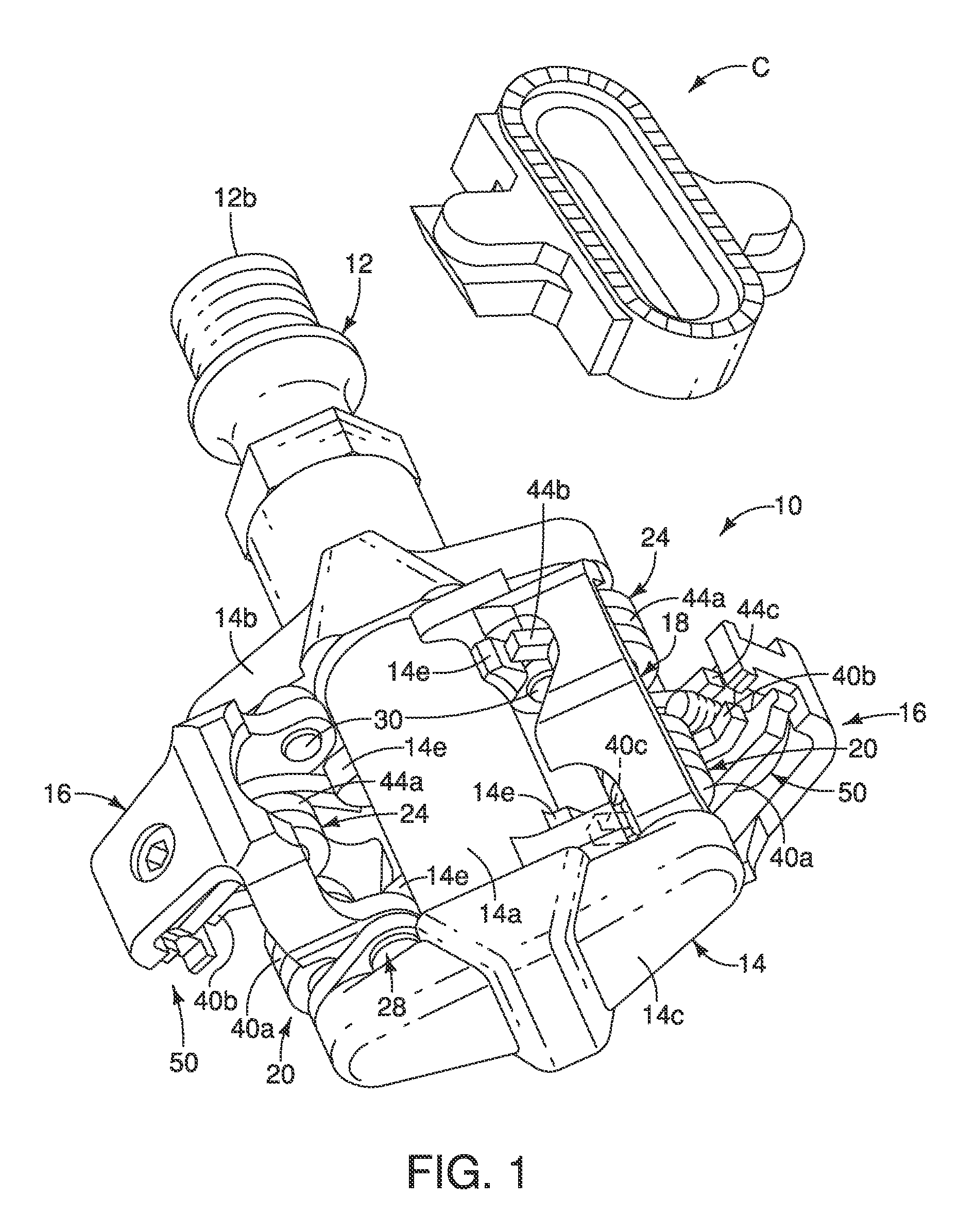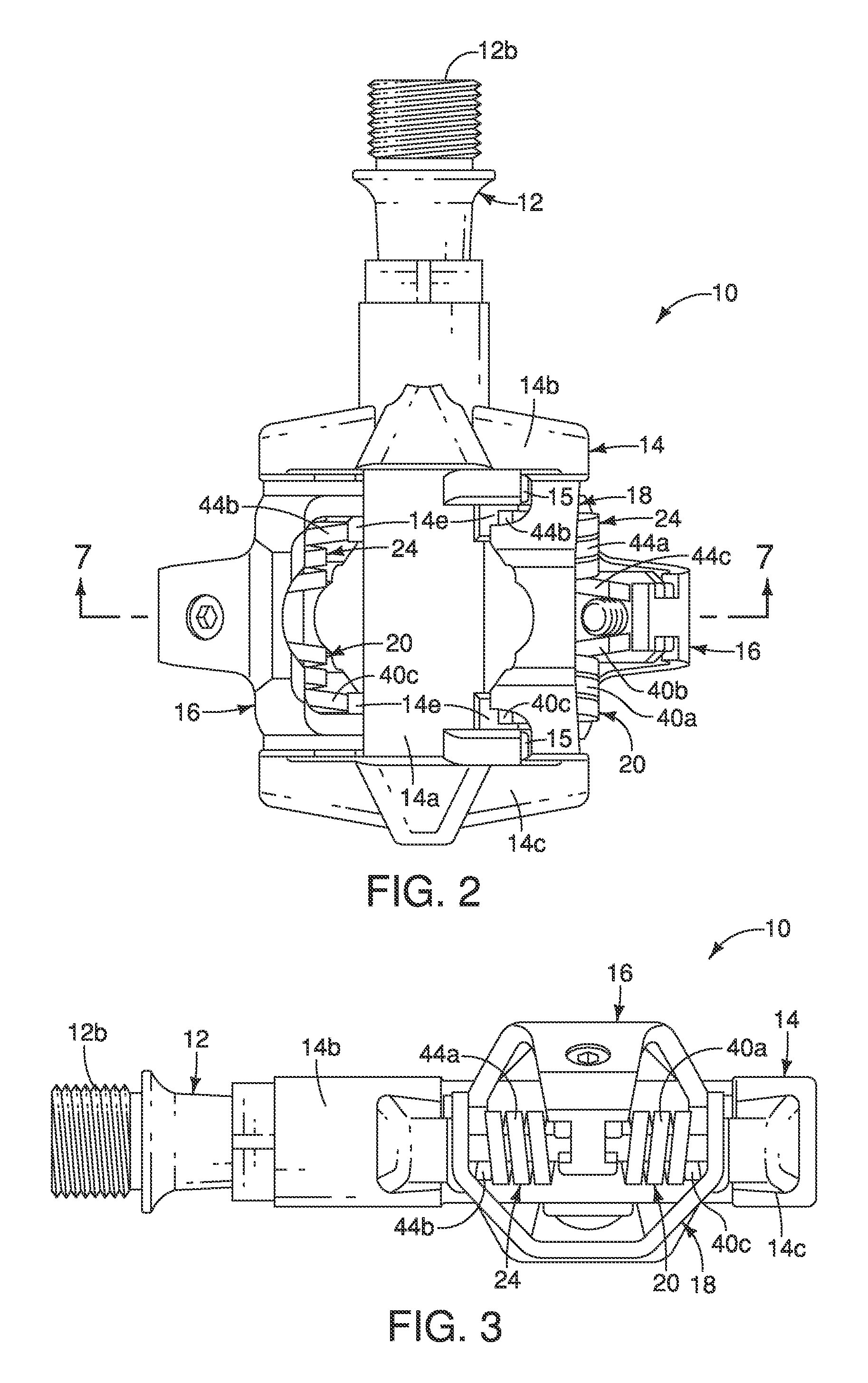Bicycle pedal
a bicycle pedal and pedal body technology, applied in the field of bicycle pedals, can solve the problems of accidental disengagement of difficulty in step-in operation for some riders, and difficulty in removing the cleat from the bicycle pedal, and achieve the effect of improving the ability to clear mud
- Summary
- Abstract
- Description
- Claims
- Application Information
AI Technical Summary
Benefits of technology
Problems solved by technology
Method used
Image
Examples
Embodiment Construction
[0042]Selected embodiments will now be explained with reference to the drawings. It will be apparent to those skilled in the art from this disclosure that the following descriptions of the embodiments are provided for illustration only and not for the purpose of limiting the invention as defined by the appended claims and their equivalents.
[0043]Referring initially to FIG. 1, a bicycle pedal 10 is illustrated in accordance with a first embodiment. In the illustrated embodiment, the bicycle pedal 10 is a two-sided (e.g. mountain bicycle style) bicycle pedal that basically includes a pedal axle 12, a main pedal body 14, a pair of first cleat securing members 16, a pair of a sub members 18, and a pair of first biasing members 20. One of the first cleat securing members 16, one of the sub members 18 and one of the first biasing members 20 is mounted at each longitudinal end of the main pedal body 14. The first biasing members 20 bias the first cleat securing members 16 toward clamping p...
PUM
 Login to View More
Login to View More Abstract
Description
Claims
Application Information
 Login to View More
Login to View More - R&D
- Intellectual Property
- Life Sciences
- Materials
- Tech Scout
- Unparalleled Data Quality
- Higher Quality Content
- 60% Fewer Hallucinations
Browse by: Latest US Patents, China's latest patents, Technical Efficacy Thesaurus, Application Domain, Technology Topic, Popular Technical Reports.
© 2025 PatSnap. All rights reserved.Legal|Privacy policy|Modern Slavery Act Transparency Statement|Sitemap|About US| Contact US: help@patsnap.com



